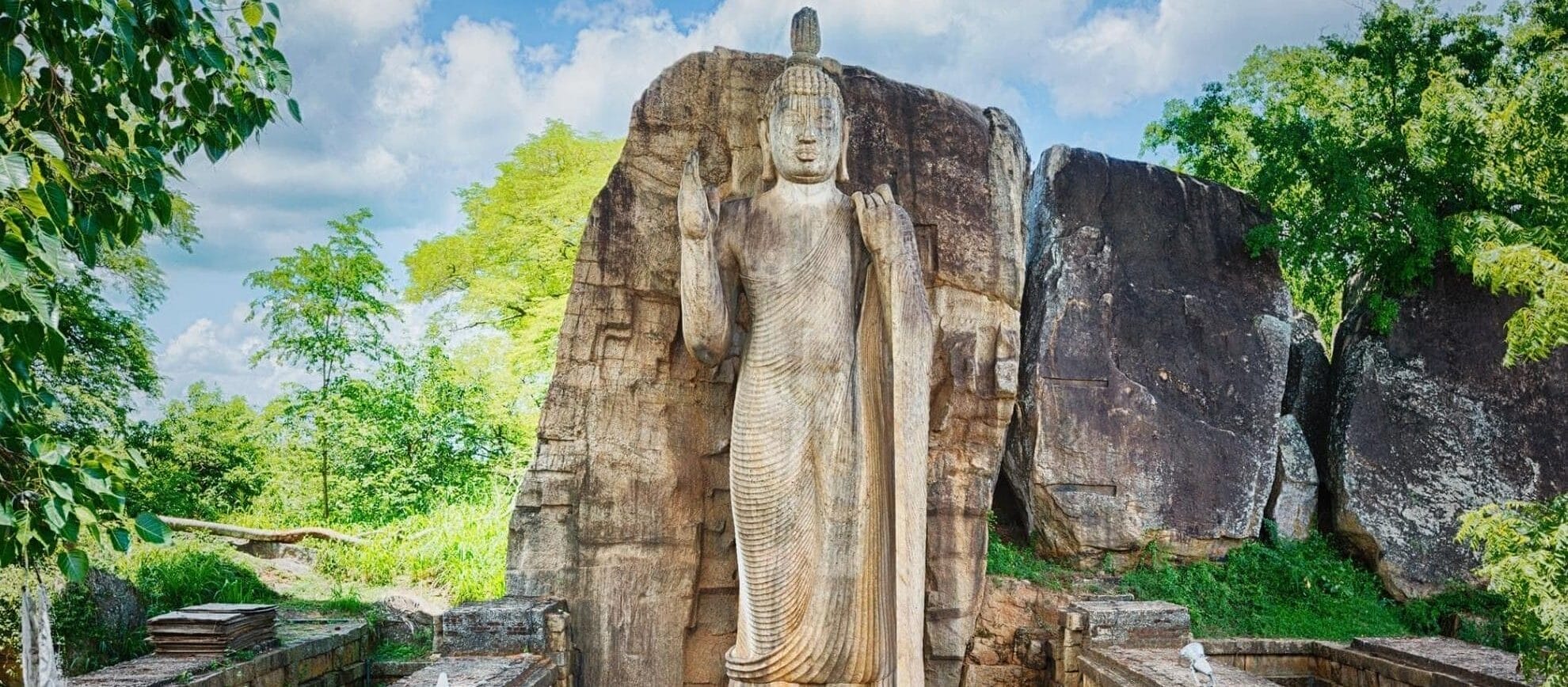Discovering Colombo: A Tale of History and Shopping at Arcade Independence Square and Independence Square
Nestled in the heart of Colombo, the Arcade Independence Square beckons as a captivating blend of history and modern indulgence. This popular shopping complex, situated in proximity to the iconic Independence Square, offers a unique experience for visitors. The Arcade Independence Square, a testament…
A Journey Through Time: Unveiling the Atamasthana of Anuradhapura
In the heart of Sri Lanka, nestled within the ancient city of Anuradhapura, lies a constellation of eight sacred sites known as the Atamasthana. These revered locations, each bearing the weight of history and faith, are more than just architectural marvels; they are a…
Baobab Tree in Mannar: Guardians of Time
The Baobab tree, a living testament to a botanical odyssey across continents, graces the landscape of Mannar in Sri Lanka. Known by various names like biobab, boab, boaboa, bottle tree, upside-down tree, and monkey bread tree, these ancient giants weave a majestic tale of…
Unveiling the History and Charm of Mannar Fort in Sri Lanka
Introduction Located on Mannar Island along the picturesque northwestern coast of Sri Lanka, Mannar Fort proudly stands as a testament to the nation’s rich historical tapestry. Its origins trace back to the Portuguese colonial period, rendering it an intriguing destination for both history enthusiasts…
Unveiling the Mysteries of Ravana Cave: A Must-Visit Destination for Ramayana Tour Seekers in Ella
Nestled amidst the picturesque landscape of Ella, Sri Lanka, lies a hidden gem that holds great significance for those embarking on a Ramayana tour. Ravana Cave, steeped in myth and legend, offers an enchanting experience for seekers of the Ramayana narrative. This natural wonder…
Divurumpola Temple: A Sacred Destination for Ramayana Tour Explorers
Located in the beautiful country of Sri Lanka, the Divurumpola Temple is a special destination for those on the Ramayana tour. This ancient temple is surrounded by peaceful surroundings and carries a deep historical and cultural significance that connects with the epic story of…
Ambekka Devalaya: A Glimpse into the Ancient Artistry of Sri Lanka
Ambekka Devalaya is a historic temple located in Sri Lanka, known for its intricate woodwork and religious significance. Situated in the village of Ambekka, near Kandy, this temple holds a special place in the country’s cultural and architectural heritage. Built during the 14th century,…
Lankathilaka Vihara
Lankathilaka Vihara, located in Hiyarapitiya, Kandy, Sri Lanka, is a historical temple that attracts tourists from all around the world. The temple was built during the Gampola period, which lasted from 1341 to 1408, and it stands as a testimony to the architectural ingenuity…
Avukana Buddha Statue
The Avukana Buddha Statue is one of the most magnificent examples of ancient Sri Lankan sculpture. Carved out of a single granite rock face, this 13-meter-tall statue of the Buddha stands tall in the middle of a peaceful, serene forest in the north-central region…
Star Fort in Matara
Start Fort, or someone called “Tharaka Kotuwa,” is an ancient building in Matara, Sri Lanka. It was built by the Dutch as a defense building during the period of 1763–1765. The start fort is located 350 meters east of the Matara fort on the…













